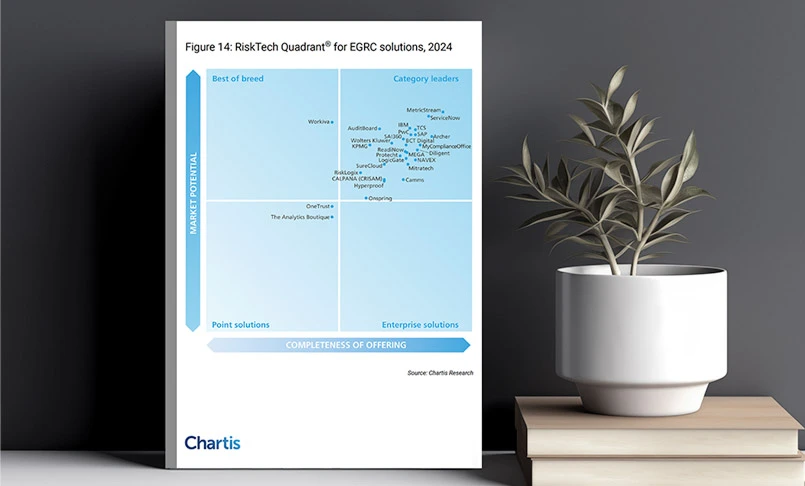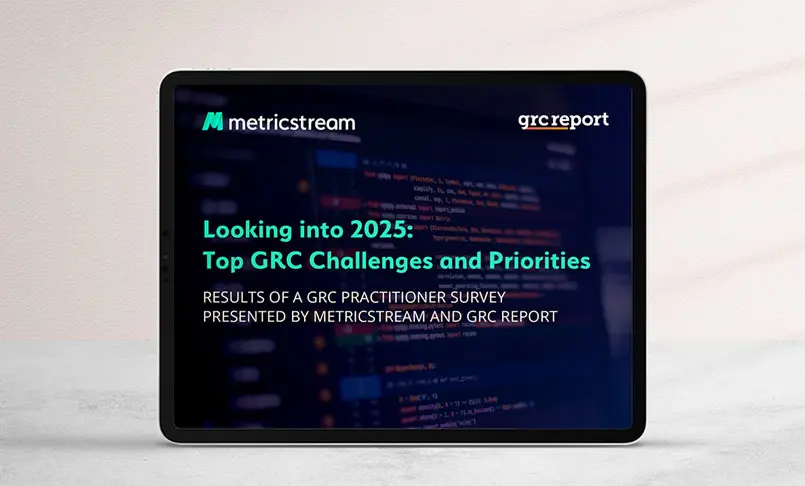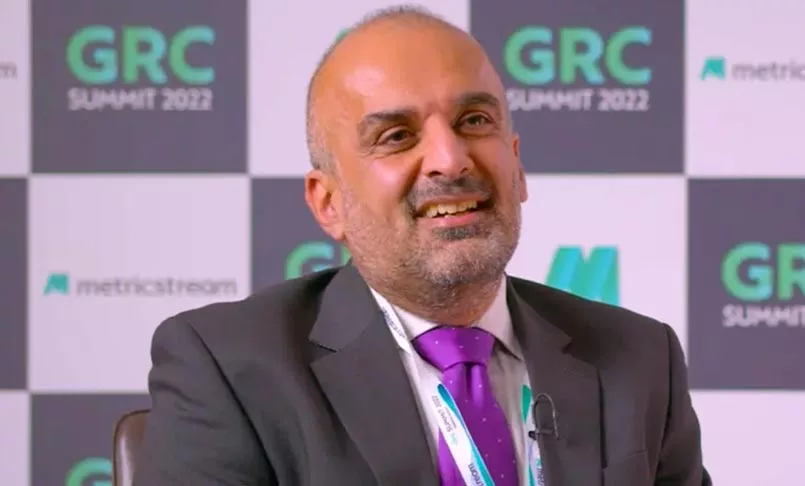Introduction
In today’s digital age, organizations heavily rely on technology to manage their operations, store sensitive data, and maintain business continuity. With this reliance comes the need for robust control mechanisms to safeguard IT environments from risks such as data breaches, system failures, and unauthorized access. IT general controls (ITGC) serve as the foundational safeguards that ensure the integrity, reliability, and security of an organization's IT systems.
This article provides a comprehensive overview of ITGC, exploring its components, importance, implementation strategies, compliance frameworks, and best practices for maintaining strong controls.
Key Takeaways
- IT General Controls are essential for ensuring the proper functioning and security of IT systems.
- They form the foundation for operational controls and compliance with regulatory requirements.
- Key components include access controls, change management, backup and recovery, and system operations.
- ITGC compliance frameworks like SOX, ISO 27001, and COBIT provide structured approaches to governance.
- Regular audits and continuous monitoring are critical for maintaining ITGC effectiveness.
What are IT General Controls (ITGC)?
IT general controls (ITGC) are a set of policies, procedures, and activities designed to ensure the secure, reliable, and efficient operation of IT systems within an organization. These controls address fundamental aspects of IT infrastructure, such as user access, system operations, data integrity, and change management.
Categories of ITGC include:
- Logical Access Controls: Protecting data and systems from unauthorized access.
- Change Management Controls: Ensuring changes to systems and applications are authorized and tested.
- Backup and Recovery Controls: Guaranteeing data availability and integrity in case of system failures. IT Operations Controls: Managing day-to-day IT operations efficiently and securely.
- IT Operations Controls: Managing day-to-day IT operations efficiently and securely.
Why is ITGC Important?
ITGCs are vital for organizations because they:
- Safeguards Data Integrity and Security: By controlling access and monitoring activities, ITGC prevents unauthorized alterations to data.
- Enable Compliance with Regulations: Adhering to ITGC frameworks helps organizations meet legal and regulatory requirements, reducing the risk of fines or penalties.
- Enhance Operational Efficiency: Proper controls streamline IT processes, minimize downtime, and ensure business continuity.
- Mitigate Risks: ITGCs provide a proactive approach to identifying and addressing vulnerabilities in the IT environment.
- Build Stakeholder Confidence: Robust ITGC demonstrates an organization’s commitment to security, reliability, and accountability, fostering stakeholder trust.
Components of ITGC
The core components of IT General Controls include:
- Access Controls:
- Restrict access to IT systems and data based on roles and responsibilities.
- Implement measures such as password policies, multi-factor authentication (MFA), and user account management.
- Change Management:
- Establish processes for planning, testing, and approving changes to IT systems and applications.
- Maintain documentation of all changes for accountability and audit purposes.
- Backup and Recovery:
- Regularly back up critical data to secure locations.
- Test recovery procedures to ensure they work effectively in case of data loss or system failure.
- IT Operations:
- Monitor system performance and availability.
- Automate routine tasks and implement incident response protocols to address system issues promptly.
- System Development and Maintenance:
- Ensure secure software development practices.
- Conduct regular testing and updates to maintain system functionality and security.
How to Implement ITGC?
Implementing ITGC involves a structured approach:
- Assess the Current Environment:
- Conduct a risk assessment to identify vulnerabilities in the IT infrastructure.
- Evaluate existing controls and their effectiveness.
- Define Policies and Procedures:
- Develop comprehensive IT policies aligned with organizational objectives and compliance requirements.
- Clearly document procedures for access management, change management, and incident response.
- Deploy Technology Solutions:
- Use tools for access control, monitoring, and auditing.
- Implement backup solutions and disaster recovery plans.
- Train Personnel:
- Educate employees on ITGC policies, emphasizing their roles in maintaining security.
- Provide specialized training for IT staff on implementing and monitoring controls.
- Monitor and Review:
- Continuously monitor IT systems for compliance with controls.
- Periodically review and update controls to address emerging threats and organizational changes.
ITGC Compliance Frameworks
Several compliance frameworks guide organizations in implementing effective IT General Controls. Key frameworks include:
- SOX (Sarbanes-Oxley Act):
- Mandates internal controls for financial reporting, emphasizing ITGC in safeguarding data integrity.
- ISO 27001:
- Provides a systematic approach to managing sensitive information and ensuring its confidentiality, integrity, and availability.
- COBIT (Control Objectives for Information and Related Technologies):
- Offers a framework for IT governance, aligning IT processes with business objectives.
- NIST (National Institute of Standards and Technology):
- Outlines best practices for cybersecurity and risk management, including ITGC.
- HIPAA (Health Insurance Portability and Accountability Act):
- It requires healthcare organizations to implement ITGC to protect patient data.
How to Perform an ITGC Audit?
An ITGC audit evaluates the effectiveness of controls within an organization’s IT systems. It includes planning the overall scope of the audit, assessing current documents and procedures, testing those parameters, reporting on any gaps and having a plan in place to address those gaps. Here’s how to perform the audit in detail:
- Planning:
- Define the scope of the audit, focusing on critical systems and processes.
- Identify relevant compliance frameworks and standards.
- Assessment:
- Review existing policies, procedures, and documentation.
- Evaluate controls for access management, change management, backup, and operations.
- Testing:
- Perform tests to verify the implementation and effectiveness of controls.
- Use tools and techniques such as penetration testing, log analysis, and interviews.
- Reporting:
- Document findings, highlighting areas of non-compliance or weaknesses.
- Provide actionable recommendations for improvement.
- Follow-Up:
- Monitor the implementation of corrective actions.
- Schedule periodic audits to ensure ongoing compliance.
How to Maintain Strong IT General Controls?
Maintaining robust ITGC is an ongoing process that requires the following:
- Regular Updates:
- Keep IT systems and controls updated to address evolving threats and technologies.
- Continuous Monitoring:
- Use automated tools to monitor system activity, detect anomalies, and generate alerts.
- Employee Awareness:
- Conduct regular training and awareness programs to keep employees informed about ITGC policies and best practices.
- Risk Management:
- Periodically assess risks and adjust controls to mitigate them effectively.
- Collaboration Across Teams:
- Foster collaboration between IT, compliance, and business teams to ensure alignment in maintaining controls.
- Audit and Feedback:
- Conduct routine audits and act on feedback to refine controls and address gaps.
Why MetricStream?
IT General Controls are indispensable for modern organizations striving to secure their IT environments, achieve compliance, and maintain operational excellence. By understanding the components of ITGC, implementing structured processes, and adhering to compliance frameworks, organizations can build a resilient IT infrastructure. Continuous monitoring, regular audits, and a proactive approach to risk management will further ensure the sustainability and effectiveness of ITGC. Adopting these practices not only minimizes risks but also enhances stakeholder confidence and organizational reputation.
With MetricStream’s CyberGRC solutions, including IT and Cyber Compliance management and IT and Cyber Policy management enables, organizations have access to a consolidated framework that can help implement and keep track of compliance with any IT regulations. For more information, request a personalized demo.
Frequently Asked Questions (FAQ)
Which is an example of an IT general control?
An example of an IT general control is implementing user access controls to restrict unauthorized access to critical systems and data.
What are common challenges in implementing ITGC?
Common challenges include insufficient resources, lack of employee awareness, resistance to change, and difficulty in keeping up with evolving technology and regulatory requirements.
Who is responsible for implementing ITGC in an organization?
Implementing ITGC is typically the responsibility of the IT department, with oversight from senior management and collaboration with compliance and risk management teams.
In today’s digital age, organizations heavily rely on technology to manage their operations, store sensitive data, and maintain business continuity. With this reliance comes the need for robust control mechanisms to safeguard IT environments from risks such as data breaches, system failures, and unauthorized access. IT general controls (ITGC) serve as the foundational safeguards that ensure the integrity, reliability, and security of an organization's IT systems.
This article provides a comprehensive overview of ITGC, exploring its components, importance, implementation strategies, compliance frameworks, and best practices for maintaining strong controls.
- IT General Controls are essential for ensuring the proper functioning and security of IT systems.
- They form the foundation for operational controls and compliance with regulatory requirements.
- Key components include access controls, change management, backup and recovery, and system operations.
- ITGC compliance frameworks like SOX, ISO 27001, and COBIT provide structured approaches to governance.
- Regular audits and continuous monitoring are critical for maintaining ITGC effectiveness.
IT general controls (ITGC) are a set of policies, procedures, and activities designed to ensure the secure, reliable, and efficient operation of IT systems within an organization. These controls address fundamental aspects of IT infrastructure, such as user access, system operations, data integrity, and change management.
Categories of ITGC include:
- Logical Access Controls: Protecting data and systems from unauthorized access.
- Change Management Controls: Ensuring changes to systems and applications are authorized and tested.
- Backup and Recovery Controls: Guaranteeing data availability and integrity in case of system failures. IT Operations Controls: Managing day-to-day IT operations efficiently and securely.
- IT Operations Controls: Managing day-to-day IT operations efficiently and securely.
ITGCs are vital for organizations because they:
- Safeguards Data Integrity and Security: By controlling access and monitoring activities, ITGC prevents unauthorized alterations to data.
- Enable Compliance with Regulations: Adhering to ITGC frameworks helps organizations meet legal and regulatory requirements, reducing the risk of fines or penalties.
- Enhance Operational Efficiency: Proper controls streamline IT processes, minimize downtime, and ensure business continuity.
- Mitigate Risks: ITGCs provide a proactive approach to identifying and addressing vulnerabilities in the IT environment.
- Build Stakeholder Confidence: Robust ITGC demonstrates an organization’s commitment to security, reliability, and accountability, fostering stakeholder trust.
The core components of IT General Controls include:
- Access Controls:
- Restrict access to IT systems and data based on roles and responsibilities.
- Implement measures such as password policies, multi-factor authentication (MFA), and user account management.
- Change Management:
- Establish processes for planning, testing, and approving changes to IT systems and applications.
- Maintain documentation of all changes for accountability and audit purposes.
- Backup and Recovery:
- Regularly back up critical data to secure locations.
- Test recovery procedures to ensure they work effectively in case of data loss or system failure.
- IT Operations:
- Monitor system performance and availability.
- Automate routine tasks and implement incident response protocols to address system issues promptly.
- System Development and Maintenance:
- Ensure secure software development practices.
- Conduct regular testing and updates to maintain system functionality and security.
Implementing ITGC involves a structured approach:
- Assess the Current Environment:
- Conduct a risk assessment to identify vulnerabilities in the IT infrastructure.
- Evaluate existing controls and their effectiveness.
- Define Policies and Procedures:
- Develop comprehensive IT policies aligned with organizational objectives and compliance requirements.
- Clearly document procedures for access management, change management, and incident response.
- Deploy Technology Solutions:
- Use tools for access control, monitoring, and auditing.
- Implement backup solutions and disaster recovery plans.
- Train Personnel:
- Educate employees on ITGC policies, emphasizing their roles in maintaining security.
- Provide specialized training for IT staff on implementing and monitoring controls.
- Monitor and Review:
- Continuously monitor IT systems for compliance with controls.
- Periodically review and update controls to address emerging threats and organizational changes.
Several compliance frameworks guide organizations in implementing effective IT General Controls. Key frameworks include:
- SOX (Sarbanes-Oxley Act):
- Mandates internal controls for financial reporting, emphasizing ITGC in safeguarding data integrity.
- ISO 27001:
- Provides a systematic approach to managing sensitive information and ensuring its confidentiality, integrity, and availability.
- COBIT (Control Objectives for Information and Related Technologies):
- Offers a framework for IT governance, aligning IT processes with business objectives.
- NIST (National Institute of Standards and Technology):
- Outlines best practices for cybersecurity and risk management, including ITGC.
- HIPAA (Health Insurance Portability and Accountability Act):
- It requires healthcare organizations to implement ITGC to protect patient data.
An ITGC audit evaluates the effectiveness of controls within an organization’s IT systems. It includes planning the overall scope of the audit, assessing current documents and procedures, testing those parameters, reporting on any gaps and having a plan in place to address those gaps. Here’s how to perform the audit in detail:
- Planning:
- Define the scope of the audit, focusing on critical systems and processes.
- Identify relevant compliance frameworks and standards.
- Assessment:
- Review existing policies, procedures, and documentation.
- Evaluate controls for access management, change management, backup, and operations.
- Testing:
- Perform tests to verify the implementation and effectiveness of controls.
- Use tools and techniques such as penetration testing, log analysis, and interviews.
- Reporting:
- Document findings, highlighting areas of non-compliance or weaknesses.
- Provide actionable recommendations for improvement.
- Follow-Up:
- Monitor the implementation of corrective actions.
- Schedule periodic audits to ensure ongoing compliance.
Maintaining robust ITGC is an ongoing process that requires the following:
- Regular Updates:
- Keep IT systems and controls updated to address evolving threats and technologies.
- Continuous Monitoring:
- Use automated tools to monitor system activity, detect anomalies, and generate alerts.
- Employee Awareness:
- Conduct regular training and awareness programs to keep employees informed about ITGC policies and best practices.
- Risk Management:
- Periodically assess risks and adjust controls to mitigate them effectively.
- Collaboration Across Teams:
- Foster collaboration between IT, compliance, and business teams to ensure alignment in maintaining controls.
- Audit and Feedback:
- Conduct routine audits and act on feedback to refine controls and address gaps.
IT General Controls are indispensable for modern organizations striving to secure their IT environments, achieve compliance, and maintain operational excellence. By understanding the components of ITGC, implementing structured processes, and adhering to compliance frameworks, organizations can build a resilient IT infrastructure. Continuous monitoring, regular audits, and a proactive approach to risk management will further ensure the sustainability and effectiveness of ITGC. Adopting these practices not only minimizes risks but also enhances stakeholder confidence and organizational reputation.
With MetricStream’s CyberGRC solutions, including IT and Cyber Compliance management and IT and Cyber Policy management enables, organizations have access to a consolidated framework that can help implement and keep track of compliance with any IT regulations. For more information, request a personalized demo.
Which is an example of an IT general control?
An example of an IT general control is implementing user access controls to restrict unauthorized access to critical systems and data.
What are common challenges in implementing ITGC?
Common challenges include insufficient resources, lack of employee awareness, resistance to change, and difficulty in keeping up with evolving technology and regulatory requirements.
Who is responsible for implementing ITGC in an organization?
Implementing ITGC is typically the responsibility of the IT department, with oversight from senior management and collaboration with compliance and risk management teams.








